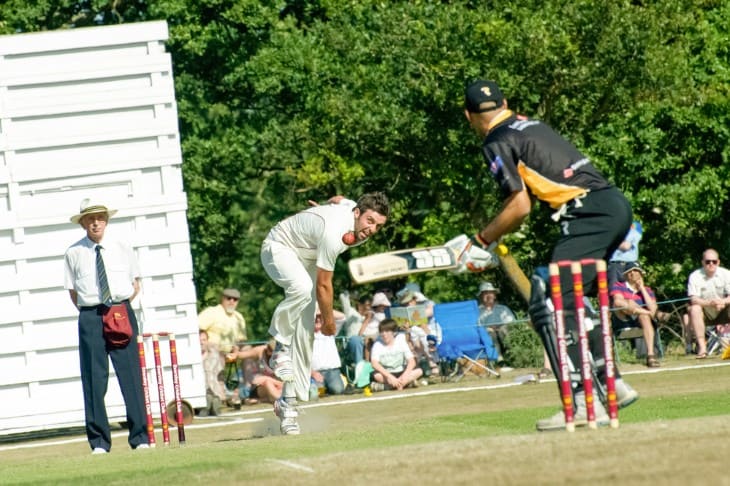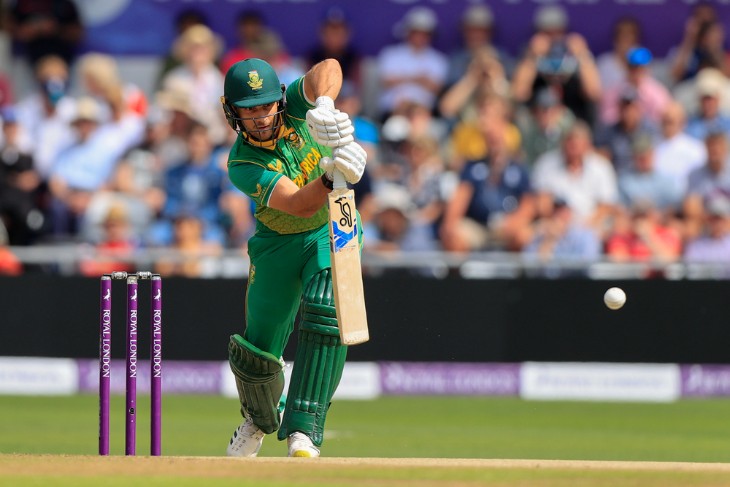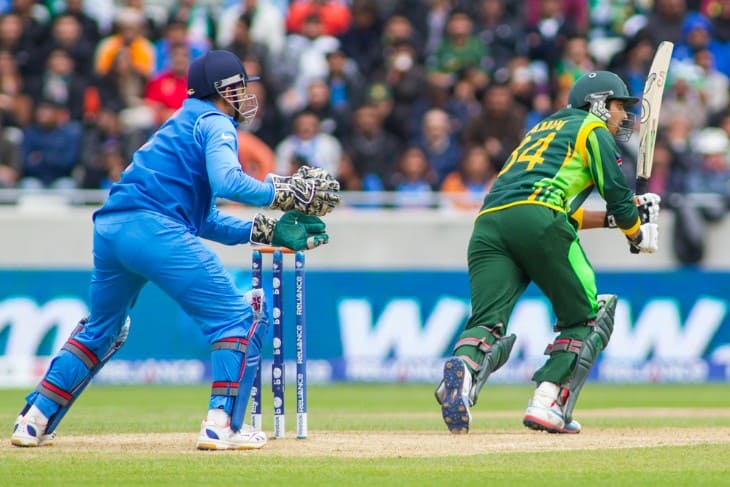- Early Origins: Cricket's Mysterious Beginnings
- Medieval Cricket: A Pastime of the Elite
- Tudor Cricket: The Game for the Commoners
- Cricket's Growth in the Stuart Era
- The Birth of County Cricket: 18th Century Developments
- The MCC and Lord's Cricket Ground: A New Dawn
- The First International Match: England vs. Australia
- Evolution of Cricket Equipment and Rules
- The Impact of World Wars on Cricket
- Modern Era: Cricket in the UK Today
- Conclusion
Early Origins: Cricket's Mysterious Beginnings
Cricket's origins are shrouded in mystery, with no clear-cut evidence pinpointing its birth. The earliest references to cricket date back to the late 16th century, where it was mentioned as a children's game in Surrey, England. However, many historians believe that the game had already been played in some form for centuries before that. Some even trace its roots back to Saxon or Norman times.
One of the earliest known descriptions of cricket can be found in a court case from 1598, where a legal dispute over a plot of land in Sussex involved a game of cricket being played. The case records that villagers were playing "creckett" on the land in question, shedding some light on the game's existence at the time. Despite these tantalizing hints, the exact rules and form of early cricket remain largely elusive. It's believed that it may have been a bat-and-ball game similar to other medieval sports, gradually evolving into the cricket we know today.
Medieval Cricket: A Pastime of the Elite
As cricket began to gain popularity in the 17th century, it became a pastime enjoyed mainly by the English elite. During this period, cricket was often played in the picturesque surroundings of aristocratic estates and was considered a leisure activity for the upper classes. The game, however, was far removed from the professional sport we see today.
Cricket in the medieval era was a far cry from the structured matches we associate with the modern game. Matches were often disorganized and played over irregularly shaped fields, with teams comprising players from the same village or estate. The bats used were more like hockey sticks, and the ball was typically a rudimentary leather object stuffed with rags.
Despite its informal nature, cricket gained popularity among the aristocracy and soon started to find its way into schools and universities. It was in these educational institutions that the foundations of the modern game were laid, with the establishment of rules and regulations that would shape cricket's future.
Tudor Cricket: The Game for the Commoners
During the Tudor period in England, cricket began to expand beyond the confines of the elite and started to attract a wider following among the common people. The game was often played in rural communities, and it became a source of entertainment and competition for both young and old. Tudor cricket matches were characterized by a lack of standardized rules, with each village or region having its own variations and customs.
Cricket was so popular among the working classes that it began to draw the attention of authorities. In 1597, an incident in Sussex saw a group of parson and yeomen playing cricket on a Sunday, prompting local authorities to take action. This incident led to one of the earliest known references to cricket in official records, as the participants were fined for their Sunday match. This reflects the growing influence of the church and its opposition to sports and activities on the Sabbath.
Despite occasional crackdowns and restrictions, cricket continued to flourish among the commoners throughout the Tudor period, setting the stage for its further development in the Stuart era.

Cricket's Growth in the Stuart Era
The Stuart era, spanning the 17th century, saw cricket gaining further traction and beginning to take on a more structured form. The game's popularity continued to spread, with matches attracting larger crowds and bets. Cricket became a symbol of rural life, with villages and towns forming their own teams and hosting matches against neighbouring communities.
One significant development during this period was the emergence of the first cricket clubs. The Hambledon Club, founded in the late 1760s in Hampshire, is often regarded as one of the earliest cricket clubs with a formal structure. The Hambledon Club played a crucial role in codifying the rules of cricket and contributing to its organization. These early clubs laid the foundation for the more organized and competitive cricket that would evolve in the 18th century.
The Birth of County Cricket: 18th Century Developments
The 18th century marked a crucial turning point in the history of cricket in the United Kingdom, as it saw the birth of county cricket and the establishment of formal rules and structures for the sport. Cricket's popularity continued to grow, and matches between various parishes, villages, and even counties became more organized and competitive.
One pivotal event was the formation of the Marylebone Cricket Club (MCC) in 1787, which played a central role in standardizing the rules of the game. The MCC produced the first comprehensive set of laws, known as the Laws of Cricket, which laid down the fundamental principles that continue to govern the sport today. Lord's Cricket Ground, located in St John's Wood, London, became the MCC's home ground and a sacred venue in the cricketing world.
The late 18th century also witnessed the first recorded instance of a county cricket match, with Hampshire taking on All-England at Broadhalfpenny Down in 1772. This marked the beginning of county cricket, where teams representing different regions or counties would compete against each other, adding a new layer of competition and regional pride to the sport.
The MCC and Lord's Cricket Ground: A New Dawn
The Marylebone Cricket Club (MCC), founded in 1787, played a pivotal role in shaping the course of cricket in the UK. As the governing body of the sport, the MCC continued to refine and codify the rules of cricket, ensuring a level playing field for all participants. The club's commitment to fairness and sportsmanship became a hallmark of English cricket.
One of the most enduring contributions of the MCC was the establishment of Lord's Cricket Ground in 1814. Often referred to as the "Home of Cricket," Lord's quickly became the epicenter of the sport. Its iconic Pavilion and the famous Long Room have witnessed countless historic moments in cricketing history. Lord's not only provided a prestigious venue for matches but also served as a hub for the development of the sport, hosting discussions on rules, technique, and strategy.
The MCC's influence extended beyond England, as they were instrumental in creating the first international cricket match, with England taking on the United States in 1844. This marked the beginning of cricket's global journey, laying the foundation for the international contests that would follow. The MCC's commitment to cricket's growth and excellence ensured that the sport continued to thrive in the UK and beyond, securing its place as a national treasure.
The First International Match: England vs. Australia
The mid-19th century witnessed a significant milestone in the history of cricket when England faced Australia in the first-ever international cricket match. The match took place in 1877 at the Melbourne Cricket Ground and marked the beginning of the historic Ashes series. It was played under timeless Test match rules, with Australia winning by 45 runs.
The term "Ashes" emerged from a mock obituary published in The Sporting Times after Australia's victory, declaring that English cricket had died and "the body will be cremated, and the ashes taken to Australia." This humorous reference became the foundation of one of the greatest rivalries in cricket. Subsequently, the two nations would compete in Test matches for the Ashes urn, a tiny trophy with immense significance in the cricketing world.
The Ashes series not only fostered intense competition between England and Australia but also added a layer of national pride to the sport. The matches became a symbol of Anglo-Australian rivalry, and cricket fans on both sides eagerly anticipated the contests. The Ashes series remains one of the most prestigious and highly anticipated events in international cricket, showcasing the enduring significance of this historic encounter.

Evolution of Cricket Equipment and Rules
As cricket continued to evolve in the late 19th and early 20th centuries, significant changes occurred in the equipment and rules of the game. The rudimentary equipment of the past gave way to more modern and standardized gear, transforming the way the sport was played.
One crucial development was the transition from handmade cricket balls to machine-made ones in the mid-19th century. These new balls were more consistent in weight and shape, allowing for a fairer contest between bat and ball. Additionally, the introduction of protective gear, such as helmets and leg pads, enhanced player safety and allowed for more aggressive batting and bowling tactics.
In terms of rules, the 20th century saw innovations such as the introduction of limited-overs cricket, which gave rise to the shorter formats of the game, including One Day Internationals (ODIs) and Twenty20 (T20) cricket. These formats brought a faster pace and greater excitement to the sport, appealing to a broader audience. With rule changes, innovations in technology, and a greater emphasis on fair play, cricket continued to adapt and thrive in the UK and around the world.
The Impact of World Wars on Cricket
The two World Wars of the 20th century had a significant impact on cricket in the United Kingdom. During World War I, many cricketers enlisted in the armed forces, and cricket grounds were converted into military training facilities. The disruption caused by the war led to a hiatus in county and international cricket. However, the sport continued to be played at the grassroots level in various forms to boost the morale of the troops.
World War II had a more profound and lasting impact on cricket. With the outbreak of the war, the cricket season in 1939 was abruptly halted, and many cricketing careers were put on hold. The war also saw cricket grounds being requisitioned for military purposes, and matches were often played under challenging conditions, with makeshift pitches and equipment. Despite these difficulties, cricket continued to provide solace and entertainment for soldiers and civilians alike.
After the war, cricket in the UK faced a period of recovery and rebuilding. The sport gradually returned to normalcy, and international matches resumed. It was a testament to the resilience of cricket and its enduring popularity among the British public, even in the face of the most challenging circumstances.
Modern Era: Cricket in the UK Today
In the modern era, cricket in the United Kingdom has continued to thrive and evolve. The introduction of limited-overs formats like One Day Internationals (ODIs) and Twenty20 (T20) cricket brought new excitement to the game. These formats attracted a younger and more diverse audience and played a crucial role in the global expansion of cricket.
England's cricketing achievements have also shone brightly on the international stage. The England cricket team has won multiple ICC Cricket World Cups and achieved success in Test cricket. The sport's popularity is further evident through the growing number of domestic T20 leagues, including the Vitality Blast, which showcases the talents of both domestic and international players.
Moreover, the inclusion of women's cricket has seen remarkable growth, with England's women's team achieving considerable success in international competitions. The increased visibility and support for women's cricket have inspired a new generation of female cricketers in the UK.
Conclusion
In tracing the rich history of cricket in the United Kingdom, we've journeyed through its origins, witnessed its transformation from a medieval pastime to a global sport, and explored the defining moments that shaped its legacy. From the hallowed grounds of Lord's to the fierce battles of the Ashes series, cricket has woven itself into the fabric of British culture, remaining a source of passion and pride for generations. As we look back at this timeline, we see how cricket has evolved, adapted, and endured, reflecting the enduring spirit of sportsmanship and camaraderie that makes it beloved in the UK and beyond.
For more information:


